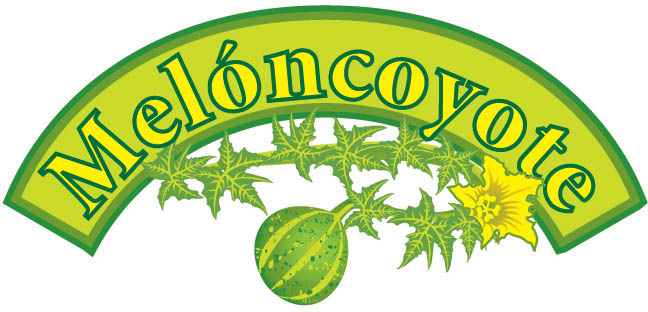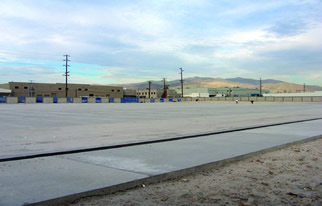
Metales y Derivados Inc., a History of Environmental Crime and Neighborhood Victory
Cristina Mariscal
TIJUANA, B.C.
More than ten thousand people (many of them adolescents) from the neighborhood of Chilpancingo on Otay Mesa (Tijuana) were exposed to lead contaminants over a 14 year period after the company Metales y Derivados (a recycler of car, truck and plane radiators, among other items) left 7,000 metric tons of toxic residue exposed in open air pits. The owner, José Kahan (who has since died), fled to the U.S. and was never brought to justice for any environmental crimes.
Remediation of the site occurred recently and it is now a multiple-use field. “With this, the neighborhood’s struggle against environmental pollution has come to an end”, said Magdalena Cerda Báez, neighborhood director and member of the Coalición de Salud Ambiental (Environmental Health Coalition, or EHC).
The problem is that in Mexico, one can not sue a business, business owner or institution if residents (i.e., human beings) are contaminated, as occurred in this case. Nothing can be done for those harmed; only the land can undergo remediation work.

The Field. Photo: Cristina Mariscal.
The Big Day
In a special ceremony on January 28th, 2009 at the site that the business once occupied, federal, state and municipal authorities inaugurated the multiple-use field that is built on the reclaimed soil; underneath a slab of concrete lies thousands of tons of contaminated, but compacted soil.
“This was the best that could be done, given the budget assigned to the revitalization of this site”, noted Cerda Báez.
Eleven million pesos (approximately USD$91,500), which represented about 75% of the total work, was invested. The rest of the money, all from public funding sources, came from the Commission of Environmental Border Cooperation (COCEF, la Comisión de Cooperación Ecológica Fronteriza), the U.S. Environmental Protection Agency (EPA) and the state government.
When the completion of the remediation work was announced, Mexico’s Environmental Secretary Juan Rafael Elvira Quezada made public that the work consisted of the “demolition of buildings, the excavation of soil contaminated with heavy metals and dangerous residues, and the construction of a stabilization and confinement cell for soil and residues with low levels of contamination”.
Some History
The business opened at this site in 1972. In 1994, faced with the evident contamination, it was closed by the Federal government. The owner declared bankruptcy and fled to San Diego, California.
The long struggle by Chilpancingo’s residents was aided by EHC and other organizations that, in 1998, delivered a petition from the residents to the Commission for Environmental Cooperation (CEC) under NAFTA’s Environmental Cooperation Agreement, demanding the urgent cleanup of the toxic site.
In 2000, with the same goal, they had a press conference in Tijuana while simultaneously in Dallas, Texas during a trinational meeting of the CEC, a representative of the community delivered 500 letters (signed by residents of the neighborhood) to the head of the Mexican environmental agency (SEMARNAP). In 2001, sympathizers and allied groups from both sides of the border demonstrated in front of New Frontier Trading Corporation, the parent company of Metales y Derivados, in San Diego, California.
The following year, CEC made public the “factual record” (a report which outlines the history of the case and obligations of involved parties) of Metales y Derivados where they recognized that the toxic substances found at the site were “putting public health at great risk”. Even so, both a plan and financing were lacking to start the cleanup process.
In 2002 the action group El Colectivo (the Collective) started, carrying out a 24 hour vigil in front of the offices SEMARNAP in Tijuana.
By 2003, a governmental work group in charge of cleanup was formed. The Chilpancingo Collective demanded to be part of it and presented their own plan for the cleanup process which they asked be applied immediately. Magdalena Cerda participated in this process as well as Yesenia Palomares Rodríguez y Lourdes Luján, among others. Magdalena explained, once they had won their lawsuit for remediation, the specialists met in the coalition office to tell them of the work needed and the process for carrying it out.
Cerda Baéz proudly commented to Melóncoyote that the agreement was signed with the Mexican government on June 24, 2004, at which time the promise was given to complete the cleanup within 5 years. The first stage was completed in September 2005, with the elimination of 1,900 metric tons of toxic waste.
In October 2007, cleanup of the area was completed, under the monitoring of independent members of the community. The case was closed on January 28, 2009.
Sources
Factual Record:
http://www.cec.org/Page.asp?PageID=122&ContentID=1917&SiteNodeID=361
All about Metales y Derivados:
http://www.environmentalhealth.org/BorderEHC/BorderEHC_Espanol/BorderESPoll2_CECdocs.html